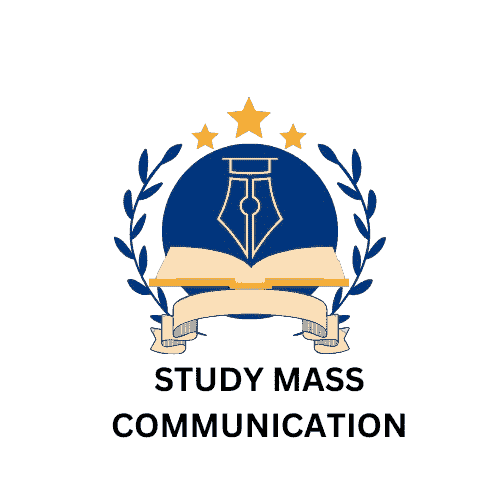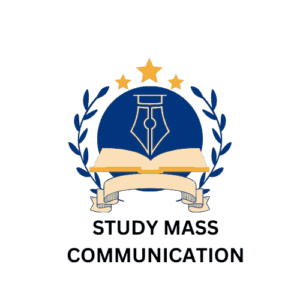Writing the headline.
headline writing | The first—and maybe only—impression you leave on a potential reader is with your headline. The remainder of your text might as well be missing if your article title or headline captures the attention of a reader and entices them to continue on.
However, a title is not just for attention-getting. A strong headline must entice the reader to continue reading your body text, but it can also convey a complete message to its target demographic.
A captivating headline must, at its core, entice the reader with the promise of some sort of reward or advantage in exchange for their valuable time spent reading on.
In page Layout
The headlines on the page should complement the artwork and images, according to the layout editor. According to the majority of reader studies, newspaper readers scan a page’s photos before headings.
It is recommended that the page designer provide ample space for writers to craft compelling headlines. In order to provide the reader with an accurate assessment of the news elements, the layout editor should also alter the headlines’ size and shape.
A few basic headline types are as follows: drop, read-in, read-out, jump heads, sidesaddle, deck (typically half the point size of the main headline), banner (streamer), hammer, kicker or eyebrow (above the main headline), and sidesaddle. ( headline writing )
Some Headline Technicalities
Avoid developing a routine of depending solely on squeezing or stretching the headline. kind appropriate for the area. It may appear sloppy to trained eyes, particularly if the “doctored” title is placed next to other headlines. Semicolons are used to divide headlines with multiple sentences, while commas are typically used to replace the word “and.” It might be preferable to avoid using colons at all because, with rare exceptions, many desks do not allow them to be used to indicate attribution.
Slate, solon, nix, eyeballs, acronyms (unless they are well-known, like CIA, FBI), and names of unknown individuals are examples of “headlinese” words to stay away from. Unless the headline is about a conviction, avoid convicting someone in it. Instead, use “in” instead of “for.”
Avert using page titles or bugs repeatedly in headlines. The term “Insiders” should not appear in the title of a regular piece that uses the bug “Insider Trading,” for instance.
Steer clear of using the same word in many headlines on the same page. The reader could get easily bored by this. ( headline writing )
Headline Typography
The layout of a magazine or advertisement may reveal a lot about the type of readership it hopes to reach and the image it wants to convey. For instance, in Britain Newspapers can be classified into two categories based on page size: ‘quality’ broadsheets and ‘popular’ tabloids. While teen ladies’ publications like Mizz utilize a lot more color and casual typography, the cover of the political journal Prospect has a beautiful, formal style.
The primary components of page design include typeface, size, shape, color, and type style. ( headline writing )
Typefaces:
The way text is typeset can significantly alter the image that is conveyed based on the shape of the letters. Typefaces can be classified into three primary groups: ornamental, sans serif, and serif. The little tabs on the corners of letters known as serifs. Sans-serif fonts, such as Helvetica, lack these characteristics; instead, they have a simpler appearance and can be created in more bold variants than serif fonts.
Serif fonts tend to be more “traditional” and authoritative, whereas sans serif fonts feel more contemporary or technological. For headlines in a broadsheet, a bold serif style such as Times Bold may be utilized. ( headline writing )
Type style:
The typeface used on a tabloid front page can take many different forms. The headline is typically typeset in a bold, condensed, sans-serif font; it can also be “reversed out,” which prints white text on a black background. Bold fonts have thicker strokes than normal, giving the font a darker appearance; condensed fonts are taller and narrower, allowing more letters to fit onto a line at a given size; oblique fonts are slanted fonts, usually sans-serif; slanted serif fonts are typically called italic. ( headline writing )
The body:
Since serif type is easier to read at smaller sizes, the story’s main text will typically be placed in this style; subheads and cross-heads between parts can use either serif or sans-serif type.
The typeface employed in the masthead, or the newspaper’s emblem, typically conveys a great deal about the image the publication is attempting to present. In the trade, the Sun and the Mirror are sometimes referred to as “redtops” in order to set them apart from middle-class tabloids such as the Express and Mail.
The Grid:
The layout of almost all publications is based on a grid, which is a background with columns on it that the type is placed into. Newspapers, especially tabloids, vary the layout of the grid from page to page, sometimes having different layouts for the top and bottom half of the page or columns with varying widths on the same page. Headlines, photographs, and story boxes can span multiple columns.
Type Alignment:
The layout of almost all publications is based on a grid, which is a background with columns on it that the type is placed into. Newspapers, especially tabloids, vary the layout of the grid from page to page, sometimes having different layouts for the top and bottom half of the page or columns with varying widths on the same page. Headlines, photographs, and story boxes can span multiple columns.
Rules:
Designers refer to rules as straight lines. For example, a ’10pt rule’ is a straight line that is ten points thick, where a point is equal to 1/72 of an inch. Rules can be used as boxes around tales, above and below the stories, or to divide columns. Compared to a broadsheet, a tabloid will likely use thicker and more clear rules.
News stories:
Narratives are arranged systematically. The primary news story in a tabloid may take up multiple times as much space as the secondary story. The article’s main text, strap line, and major headline will all be distinguished from one another using type size. The story will be introduced to readers gradually. Stories in broadsheet and tabloid newspapers typically fill a square or rectangle, with any extra space spilling over to a different page. A ‘jump line’ indicates the page that the reader should go to.
Pictures:
Large pictures generally adorn the front page of tabloids. In order to make the main photo appear larger in comparison, any other pictures are often very small. Images are typically only used at the same size when they are being directly compared, such as the faces of rival politicians. Tabloid pictures are carefully cropped to remove any extraneous details, and captions are added to make sure we understand the intended message. More ambiguous or freely cropped images can be utilized in a broadsheet.
Differentiation:
Four categories can be used to group the items on the page: general ‘puffs’ or ‘plugs’ advertising what’s happening; the day’s news stories with their accompanying photographs; details about the newspaper (such as its name, price, and date); in the newspaper and, if any, commercials. Usually, it is fairly evident how these kinds of products differ from one another:
Usually, just one color is utilized for the masthead, which is the newspaper’s emblem. It is going to be typeset in a font style that doesn’t appear anywhere else on the page.
News articles are typically typeset in black font on a white backdrop, with color reserved for the images. Typically, stories take up squares or rectangles.
“Puffs” can be colorful and use a variety of writing styles. They are typically arranged in asymmetrical shapes or boxes with rounded corners, and the photographs within can be sliced out to extend beyond the border. Usually, they are next to the masthead at the top of the page.
Advertisements are also frequently colored, but they will be distinctly set apart from the rest of the page by a rule or box, and they will be placed far from the masthead.
Putting it all together:
All of these strategies are used on a tabloid front page to simplify things for the reader. The news stories and puffs may easily be distinguished from one another, as can the primary news story and the order in which it should be read. A broadsheet, on the other hand, will employ many of the same strategies, albeit less overtly, giving readers an option as opposed to pushing them toward a single article.
about us.

Thank you for visiting [STUDY MASS COMMUNICATION.COM]. Join us on our journey to explore the dynamic world of mass communication and journalism course.
WHAT ARE THE REQUIREMENTS FOR ADMISSION TO MASS COMMUNICATION AND JOURNALISM?
The requirement for the mass communication and journalism course is a 12th pass. You have 50% in 12th for admission. There are no other requirements for mass communication and journalism.
WHAT CAREER PATHS CAN GRADUATE STUDENTS AFTER A DEGREE IN MASS COMMUNICATION AND JOURNALISM?
After graduate in a mass communication and journalism degree, you have many options to do in mass communication. You have done postgraduate in mass communication and journalism. You have many options in postgraduate. You are doing a postgraduate in one stream. You also doing a job after mass communication and journalism.
HOW MUCH TIME WE HAVE TAKEN IN MASS COMMUNICATION AND JOURNALISM COURSE?
We have taken 3 years when we doing graduation in mass communication and journalism. When we doing post-graduation in mass communication and journalism we have 2 year time.
ARE THERE OPPORTUNITIES FOR INTERNSHIPS OR PRACTICAL PROGRAMS?
They have many options for internships. We have done internships in newspapers, radio, television channels, etc. They have many more places we have doing internships.
ARE THERE CAREER SERVICES OR JOB PLACEMENTS AVAILABLE IN MASS COMMUNICATION AND JOURNALISM COURSE?
There are many career services and job placements available in this. We have many options for job placements. We have many options for a job. Some jobs are given below:-
Reporter, Anchor, Editor, Sub-editor, Chief-editor, Cameraman, RJ, Radio Scrip writer etc.
WHAT INDUSTRIES OR SECTORS TYPICALLY HIRE MASS COMMUNICATION AND JOURNALISM GRADUATE STUDENTS?
Some industries or sectors typically hire mass communication and journalism graduate students. Some industries or sectors that have this student this sectors are:- Newspaper groups, News Channel groups, Radio groups, Research groups, etc.
